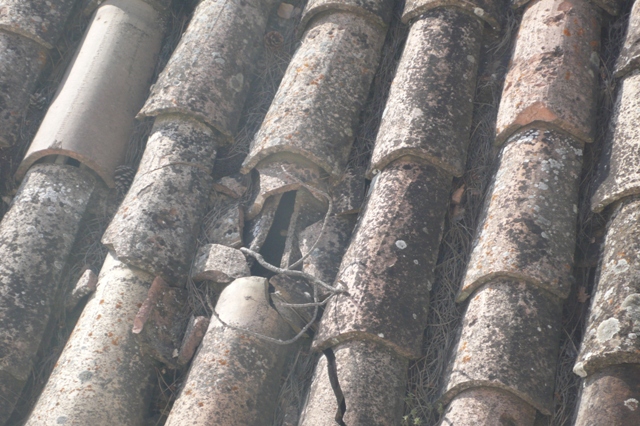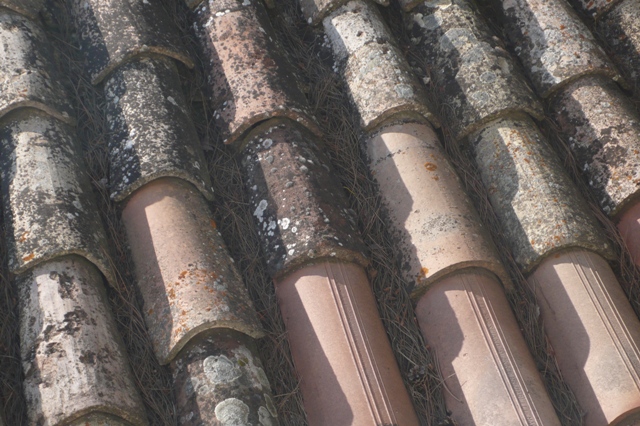Traditional Roman Roofs in Portugal
Roman tiled roofs look very attractive and have been in use here for more than 2,000 years. This enormous amount of time in use proves that they work so why change them ?
Roman style tiles or “Cirano” as they are known locally in Portugal or “Antiga Portuguesa” The tiles on this roof are 300 years old.

They won’t last much longer because there are a couple of things conspiring against them. Although the tiles are made of clay like modern tiles they are normally sun dried which makes them soft and porous. Consequently they degrade with the sun, UV, cold, break from being walked on or things falling on them such as tree branches.
The original Cirano tiles vary in depth of curve, length, thickness and the colour/type of clay used. Laid correctly on a well prepared roof they do look attractive and can add a lot of character to an building. An example of their fragility. One roof that we worked on to repair a serious leak, caused by a satellite TV engineer walking on the tiles to fix a satellite dish, required 80 broken tiles replacing plus a further 10 that we broke while removing the damaged tiles.

Apart from being easily damaged they do have the habit of slipping out of position because they are not nailed down. In some areas every 7th row is cemented in place but this is a half hearted solution to the problem. If you really do want to achieve or maintain the rustic look of these tiles then there are a couple of solutions: Lay roofing membrane and insulation on top of the rafters. On top of this fit tanalised (preservative impregnated) tile lath. Secure this with rust proof nails and lay the Cirano tiles on top of the battens. Alternatively, carefully take off all the old tiles and old tile lath which probably has wood worm anyway. Have the roof timbers treated for woodworm and lay insulation and Onduline sheeting which the tiles then rest upon. There is a specific type of sheeting for these tiles.This gives much better support for the tiles and helps to stop them slipping down the roof. This link takes you to a product fact sheet: http://www.onduline.com/pt/&module=category&var1=25&product=9 One additional advantage of this roofing system is that should tiles be broken you will still have a watertight roof until you can go and fix them.( This is vital because a slipped tile can cause penetrating damp problems in walls or can rot out the roof timbers ( more information on penetrating dam go to www.dampfix.net)
Alternatively you can use a modern kiln dried tile which when laid properly is water tight, not effected by sun or frost and looks very similar when installed to “Antiga Portuguesa”. For advice on your roofing project, estimates for all roofing work, wood worm treatment of roofing timbers contact casteloconstruction@gmail.com Skype ID casteloconstruction For further information on what we do go to www.casteloconstruction.com

